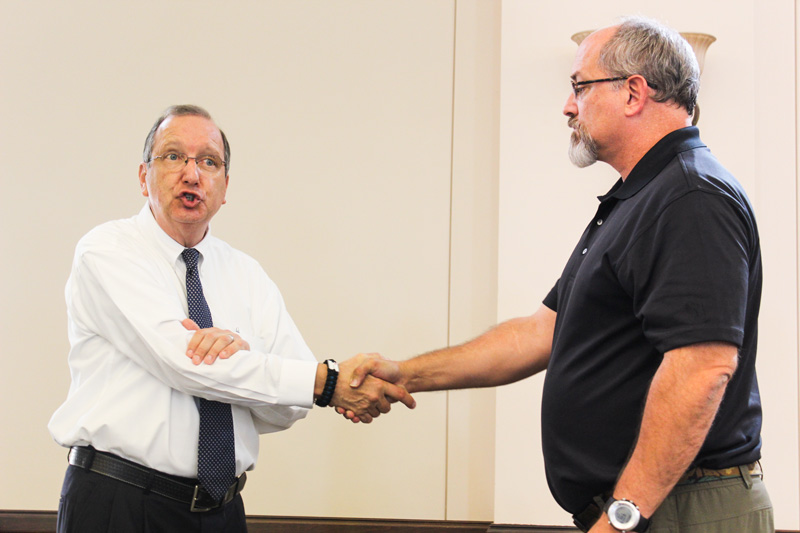
NORTH MYRTLE BEACH—Houses of worship might be spiritual sanctuaries, but sadly can’t keep people safe from physical danger. The June 2015 shooting that took the lives of nine people in a Bible study at Emanuel African Methodist Episcopal Church in Charleston was stark and sad evidence of that fact.
That’s why pastors and lay people need to know how to make their churches a place for physical and spiritual wellbeing, according to Thomas Gillan, founder and director of the PSU Crisis Management and Training Group in North Carolina.
Gillan offered an all-day class on “Safety and Security for Places of Worship” on Aug. 31 at Our Lady Star of the Sea Church. The session drew church workers plus members of St. Andrew Church in Myrtle Beach, police officers from Goose Creek, and members of Timberlake Baptist Church in Socastee and Ocean Drive Presbyterian Church in North Myrtle Beach.
The key to providing a safe environment at a church is to be aware of all the different dangers that can arise and how to handle them, Gillan said. That means learning not to overlook even the smallest detail, such as a stranger who walks in the front door on Sunday carrying a backpack. An innocent item such as that, he said, was used by Dylann Roof, the suspect in the Charleston shootings, to conceal his firearms.
“Yes, God is there for you, but God expects you to do a little work too,” Gillan said. “We can’t put it all on His shoulders. We are all instruments of His work and we are also called to learn how to protect ourselves, so you have to start planning ahead before something happens … An event such as an active shooter situation could change your life and the life of your church forever.”
Concern about violence has led some churches, like the sprawling First Baptist Church in Dallas, to adopt strict policies banning backpacks, Gillan said.
Not every house of worship might want to go that far, he said, but staff members and volunteers such as ushers and greeters need to be trained to keep an eye out for things that don’t seem right or could present a danger. That includes learning how to deal with angry or agitated visitors and members who might show up in a distraught mood or under the influence of alcohol or drugs.
Even though many churches host services and activities that draw hundreds of people each week, statistics show that more than 40 percent don’t have formal safety and security programs in place, Gillan said. Many organizations don’t even have a plan for something as basic as a fire drill. He said all churches should establish both a safety/security policy and a child protection policy.
The first step, he said, is for every house of worship to ask crime prevention specialists from local law enforcement agencies to conduct a safety assessment and point out possible risks around the property.
Gillan said pastors and other leaders should then work with people in the pews to cultivate a safer environment at the church.
He urges them to form safety teams of responsible volunteers who will learn about first aid and the proper way to respond to a wide variety of situations, from fires and weather emergencies to active shooter scenarios. Other staff members, such as secretaries and ushers, should learn how to confront safety issues that might arise during regular activities.
Gillan also encourages churches who feel they need security to consider hiring off-duty law enforcement officers to be on patrol during worship services or other activities. This approach has two benefits: it puts responsible, trained men and women in charge of security, and removes liability from the church itself.
Father Robert Sayer, pastor of Good Shepherd Church in McCormick and Sacred Heart Church in Abbeville, drove from the Aiken Deanery to attend the session because he believes the topic is so important. He plans to form a leadership team to address safety issues at both churches.
“It can be overwhelming to learn about all the dangers that are out there, but it is necessary,” Father Sayer said. “We go on faith each day, but we also need to think ahead about situations that could happen and how to prevent them.”
Miscellany photo/Christina Lee Knauss: Instructor Thomas Gillan (left) demonstrates the “two-arm” safe distance length for a handshake with Bruce Mount of North Myrtle Beach. This is a safe distance to maintain when approaching an unknown visitor or stranger who enters a house of worship.


